Visit Omis: The Summertime Holiday Winter Dreams Are Made For
17 December 2020 – Missing adventure, escape, breathtaking landscapes and unspoiled nature? Visit Omis in 2021 - with 20 kilometres of perfect beaches and crystal-clear seas, the mighty Cetina river and an atmospheric Old Town, it's the summertime holiday that winter dreams are made for.
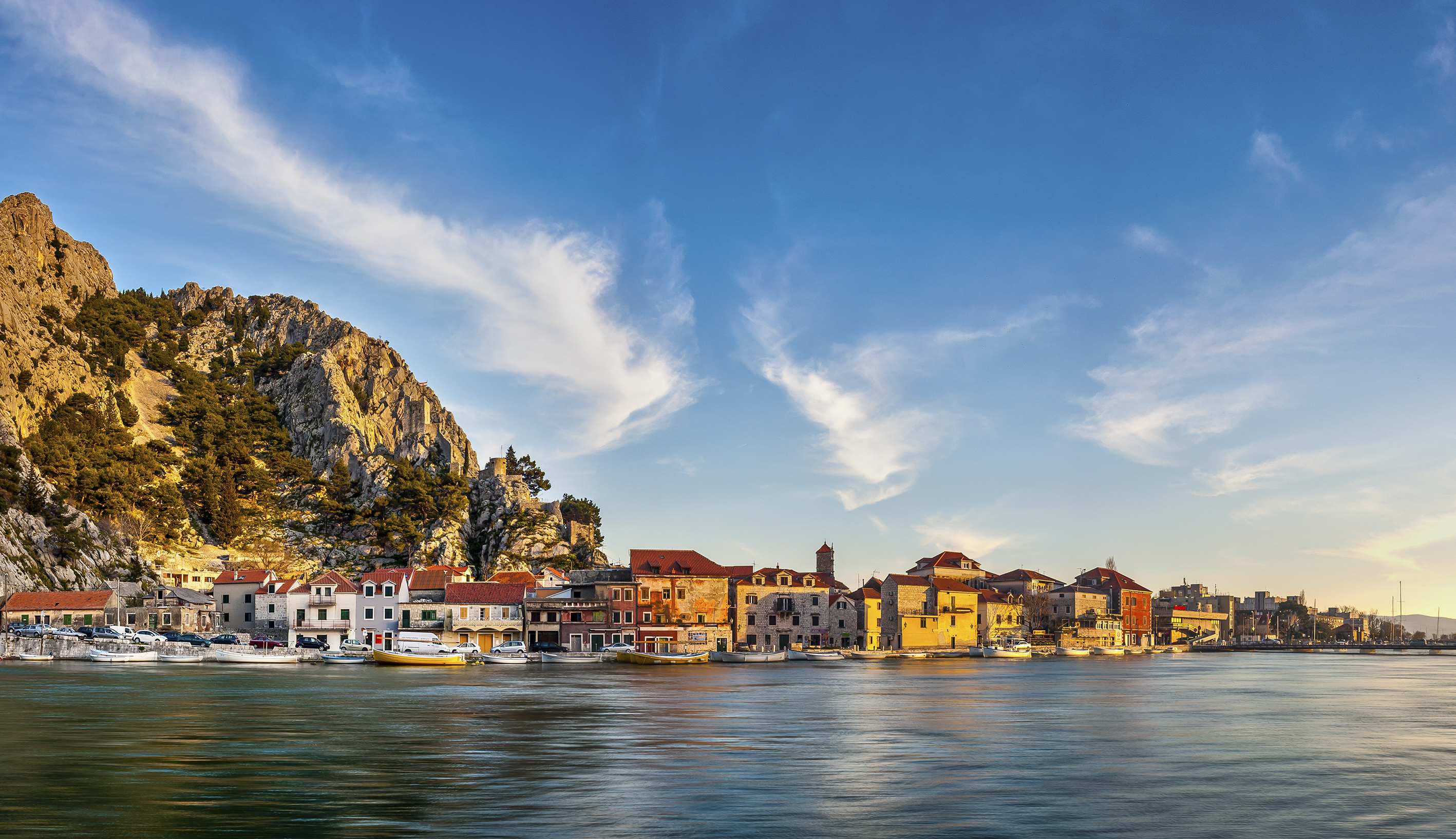 The pretty pastel shades of buildings in Omis contrast beautifully against the sheer, grey, karst rock which rises sharply behind © Omis Tourist Board
The pretty pastel shades of buildings in Omis contrast beautifully against the sheer, grey, karst rock which rises sharply behind © Omis Tourist Board
The cold outside is often reason enough to spend most of winter indoors. It's a good time for wrapping presents or even wrapping yourself in blankets. Perhaps, if it snows, you'll sit by the window, daydreaming. With a chill in the air, there's no better dream than that of next summer. In the warmth of the summer sun, you can forget all about those blankets and staying indoors. It's time for escape, adventure, the great outdoors, to hit the beach and to swim in the sea.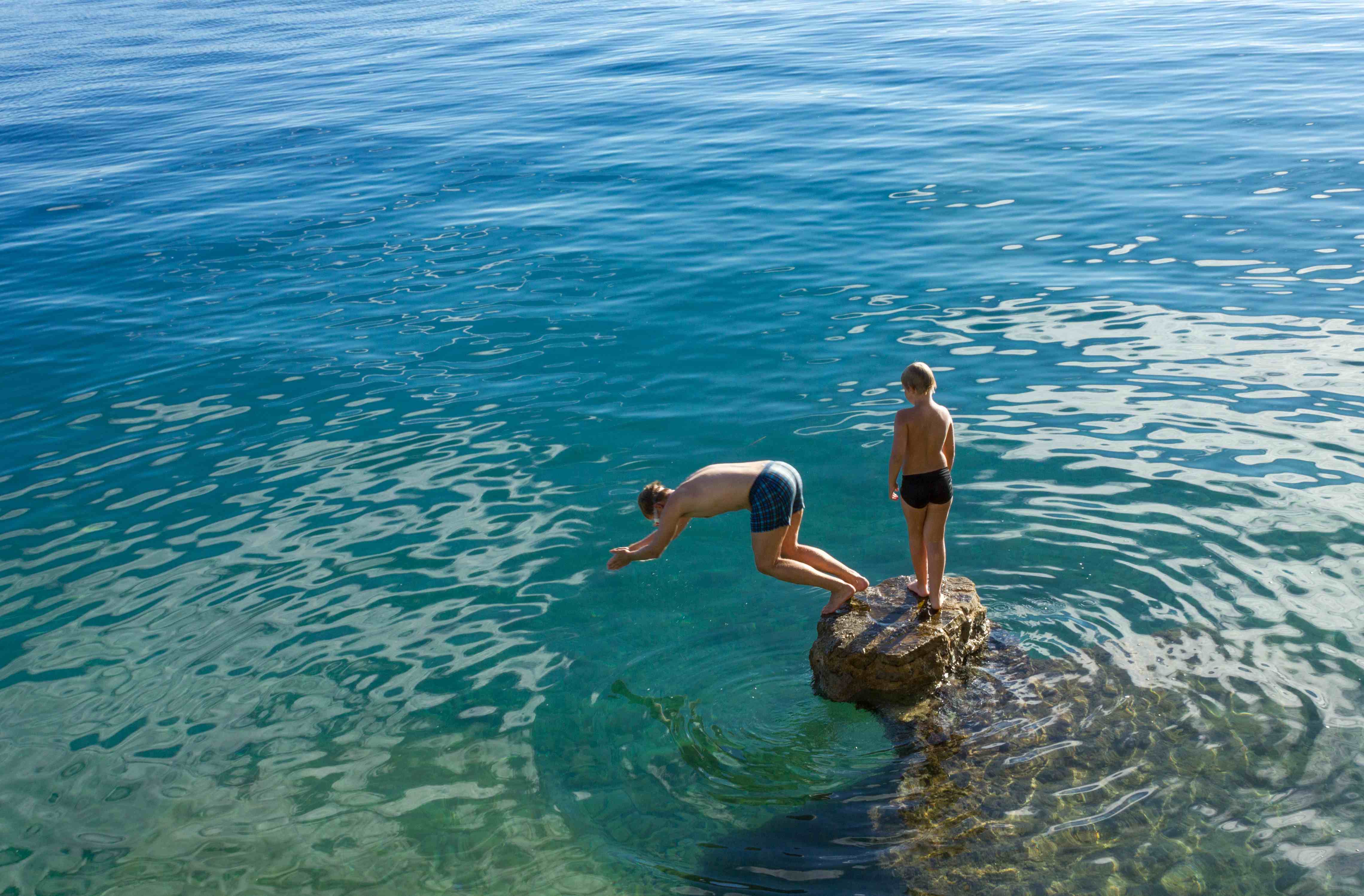 Crystal-clear waters run along the length of the Omis riviera © Omis Tourist Board
Crystal-clear waters run along the length of the Omis riviera © Omis Tourist Board
In 2021, the City of Omis will once again welcome winter's dreamers. From Springtime to October, visitors will come and enjoy its extended summer, many of them returning as they do every year. Because, once you visit Omis, there really is nowhere else that can match its incredible offer. A spectacular landscape, with the lush Cetina river valley cutting through the Dinaric Alps to flow into the sea at Omis - you can see the island of Brac in the distance © Omis Tourist Board
A spectacular landscape, with the lush Cetina river valley cutting through the Dinaric Alps to flow into the sea at Omis - you can see the island of Brac in the distance © Omis Tourist Board
The unique experience when you visit Omis is a product of a singular history and geography. Standing on the mouth of the Cetina - the largest river in Croatia to drain into the Adriatic – Omis and its surrounding riviera is not only filled with pristine and peaceful beaches, it also has waters that, for hundreds of years, have connected the city far into the hinterland. When you visit Omis, it is this riverside positioning that gives its unmissable adventures, culture, heritage and nature.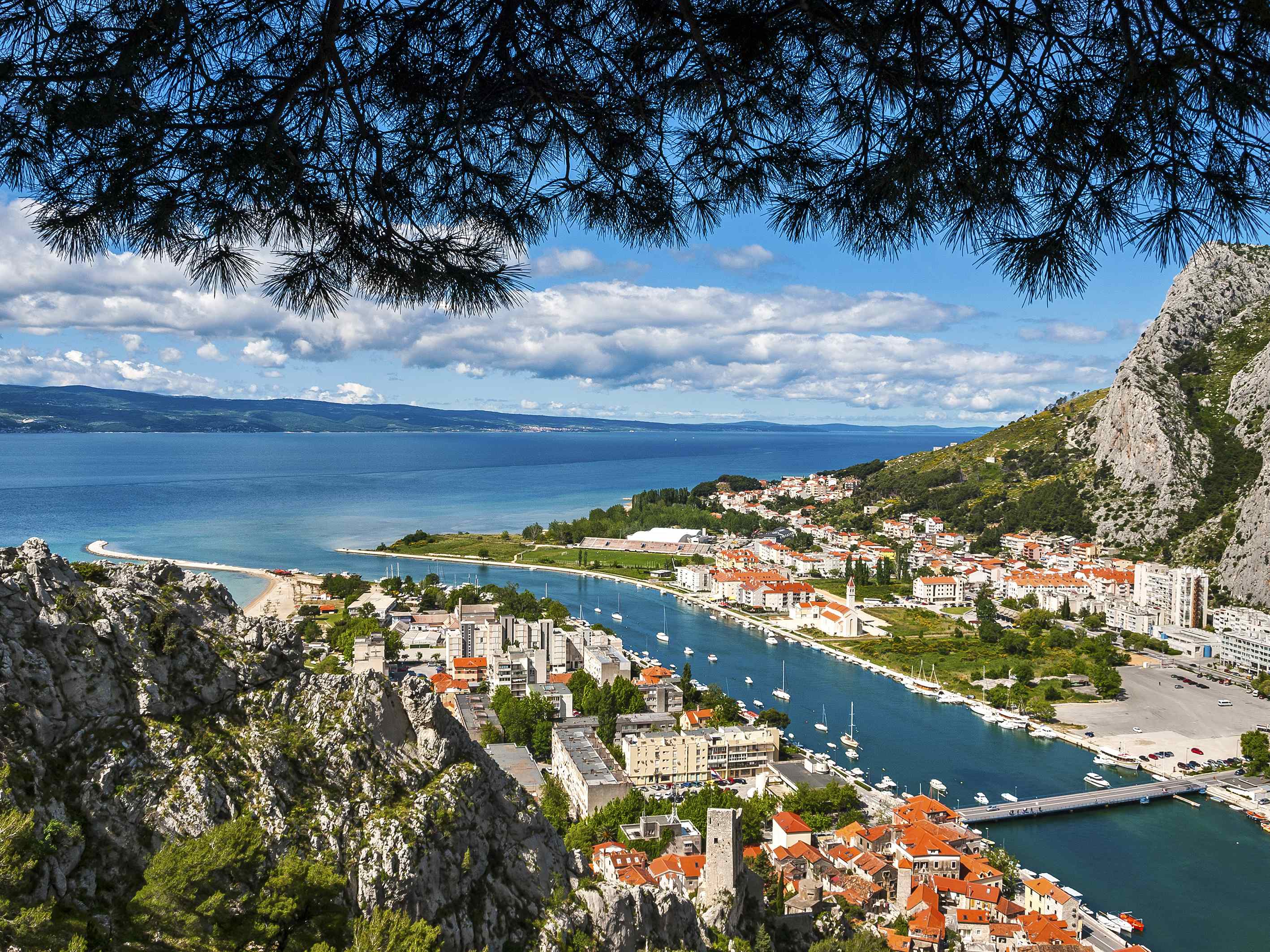 The Cetina river is the largest to flow into the Adriatic in Croatia and helps give Omis a truly unique offer © Omis Tourist Board
The Cetina river is the largest to flow into the Adriatic in Croatia and helps give Omis a truly unique offer © Omis Tourist Board
Omis has been inhabited since at least Roman times. Today, the winding, narrow streets of its Old Town are a pretty promenade with a distinctly Mediterranean atmosphere. Walking down these stone-paved pathways, intriguing architecture built over centuries is revealed – an unexpected city square opens up, seating drinkers and diners. Above them, the walls of an ancient church and beyond, the spectacularly lit Mirabella fortress that stands impressively above the town. You can easily walk to the top and look over the Old Town and river or, by day, take the path further back, up to the 15th century Starigrad Fortress. Its walls are renowned to hold one of the greatest views in Croatia, the island of Brac dominating the skyline, further still, the island of Hvar. Both can be toured by boat on day trips when you visit Omis.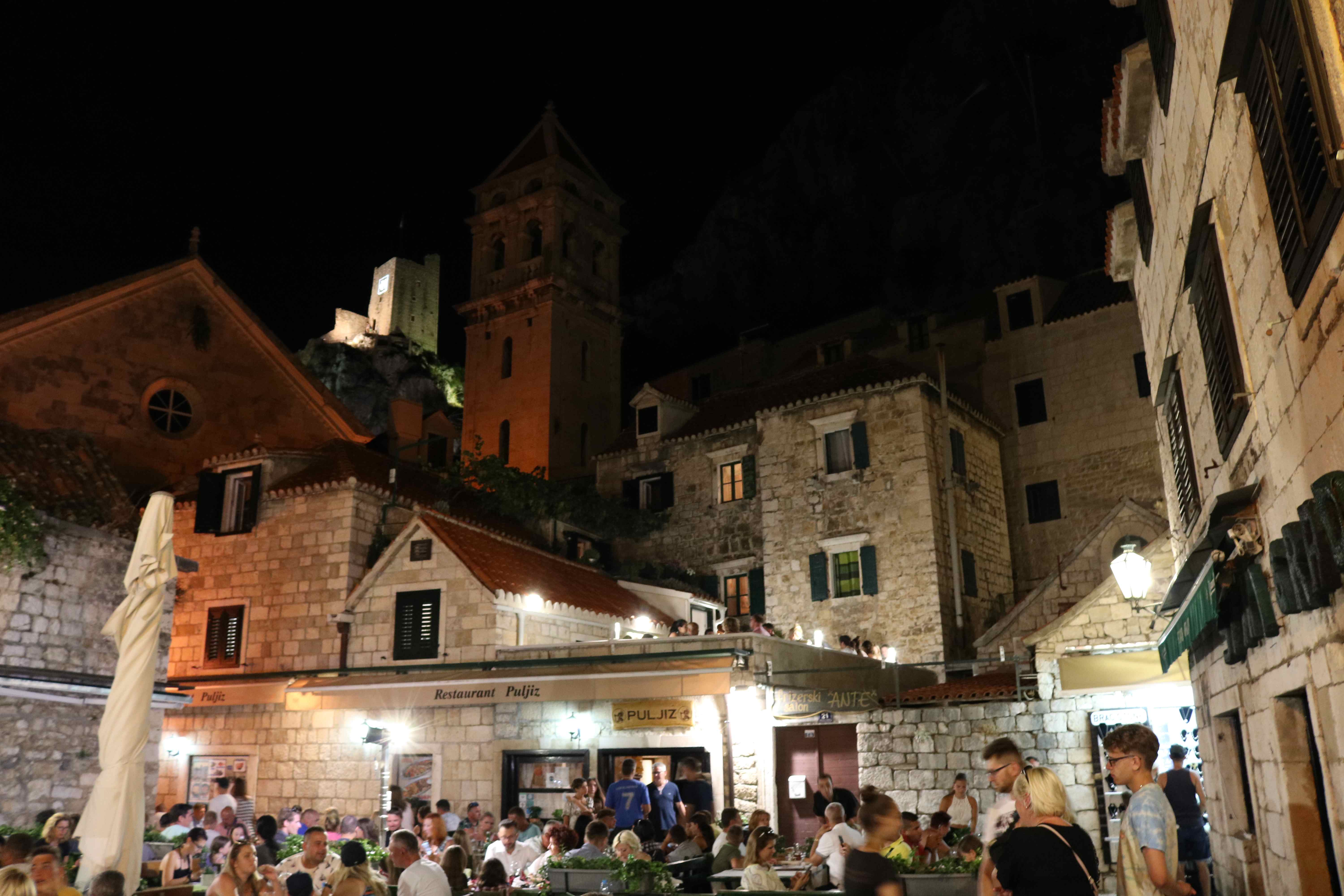 The atmosphere-filled Old Town of Omis © Marc Rowlands
The atmosphere-filled Old Town of Omis © Marc Rowlands
Besides venturing out to sea by boat, taking to the waters of the Cetina river is the best way to get the most from the unique offer when you visit Omis. You can kayak from the town into the nearest sections, watching as the pastel shades of Omis buildings are replaced by the towering, epic cliffs of grey karst rock, sometimes dotted with brave and experienced free climbers. Then, suddenly, the river widens to become flanked by reeds, then fields and trees. Birds sit atop the water or fly overhead, fish dart below you in crystal-clear waters, insects and frogs can be heard coming from some hidden place. The whole landscape seems alive, yet silent except for the sounds of nature – you can't hear a single car engine, not the buzz of an overhead cable, only the dipping of your oar in the calm waters.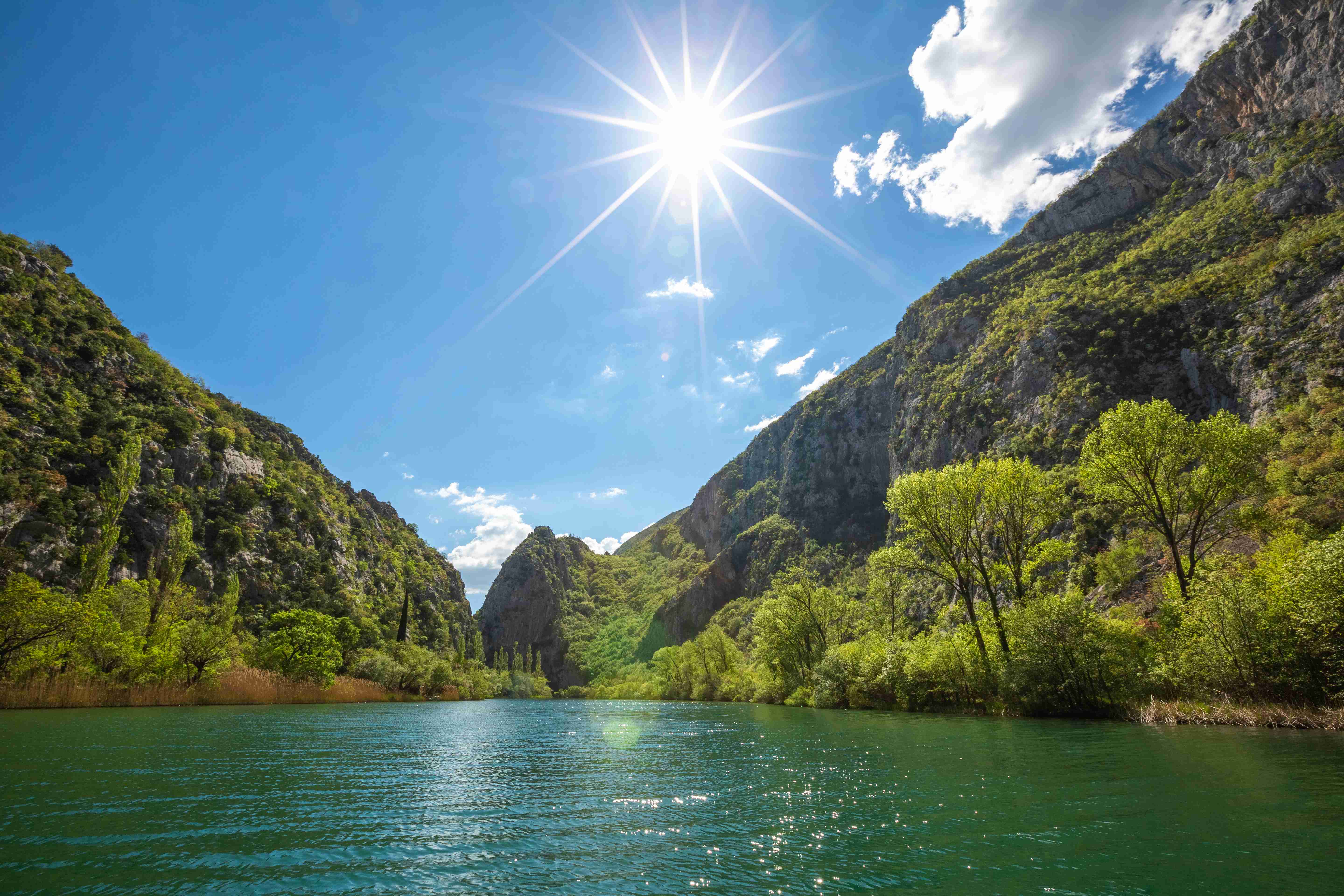 The still and silent Cetina river valley near Omis, perfect for kayaking and reconnecting with nature © Samir Kurtagić / Omis Tourist Board
The still and silent Cetina river valley near Omis, perfect for kayaking and reconnecting with nature © Samir Kurtagić / Omis Tourist Board
Further up the river, the sounds are not so silent. Thrillseekers scream as they fly down the longest run of ziplines in Croatia – a series of eight lines, at times rising 150 metres above the river, the scenery of mountains and surging river is breathtaking, as feet whistle over high treetops. Further up the river, rapids produce white waters perfect for rafting. Although an action-packed run of over two-hours duration, it's an undemanding course taken by many families with children as young as six. Between the fast-moving sections are waterfalls that spray the air and peaceful pools where you pause to swim. At one of the largest stands a huge picnic area, serviced by a restaurant specialising in the rustic cuisine of this part of the Dalmatian hinterland. Thick-crusted, homemade bread is made within metal bells atop wood fires, the perfect accompaniment to local cheeses, prosciutto and seafood.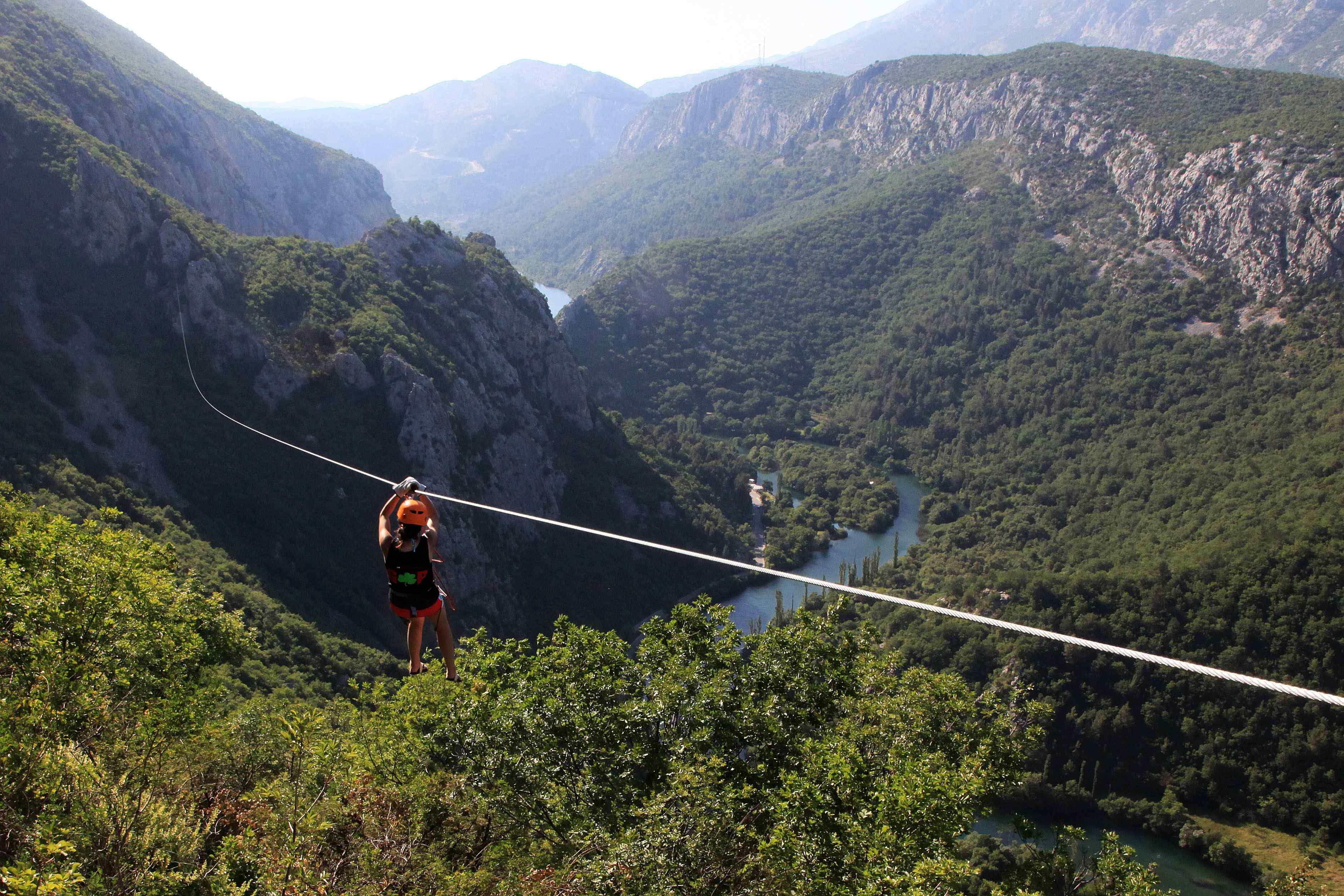 © Zipline Croatia
© Zipline Croatia
Here, away from the shoreline of the town, countless small villages appear on the roads between the river and mountains. Life in these villages looks remarkably like it did a few hundred years ago. The same fruits and vegetables and vines still grow around the traditional houses, many of them ending up on the tables of the fine restaurants you'll dine in when you visit Omis. The same meals are prepared, such as Soparnik, one of Croatia's most authentic dishes – you can only find it in the small region surrounding Omis. The same folk dances are preserved, and the same songs fill the air. You can hear many of them in Omis itself – the city hosts a famous 55-year-old festival of klapa (acapella) music, its singers dressed in traditional clothes, their voices echoing around the stone streets of the Old Town in the same way they have for hundreds of years. The chamber music evenings and one of the most important guitar festivals in the region add to the wonderful entertainment and atmosphere of balmy summer evenings you have when you visit Omis. Soparnik, one of the most authentically Croatian foods in the country. It comes from the hinterland behind Omis and it's unlikely you'll find it anywhere else © Marc Rowlands
Soparnik, one of the most authentically Croatian foods in the country. It comes from the hinterland behind Omis and it's unlikely you'll find it anywhere else © Marc Rowlands The 55-year-old festival of klapa music in Omis © Omis Tourist Board
The 55-year-old festival of klapa music in Omis © Omis Tourist Board
Of course, no trip to the Adriatic is complete without time spent on the beach and swimming in the sea. And, when you visit Omis, you're in one of the best places anywhere in Croatia to enjoy it. Relatively undiscovered, the Omis riviera has a wide range of options to suit all. Want to stay close to town? Visit Omis city beach – it's right on your doorstep, popular with families and its waters famously clean. It is extremely rare to find a huge sandy beach like this, right in the heart of the city.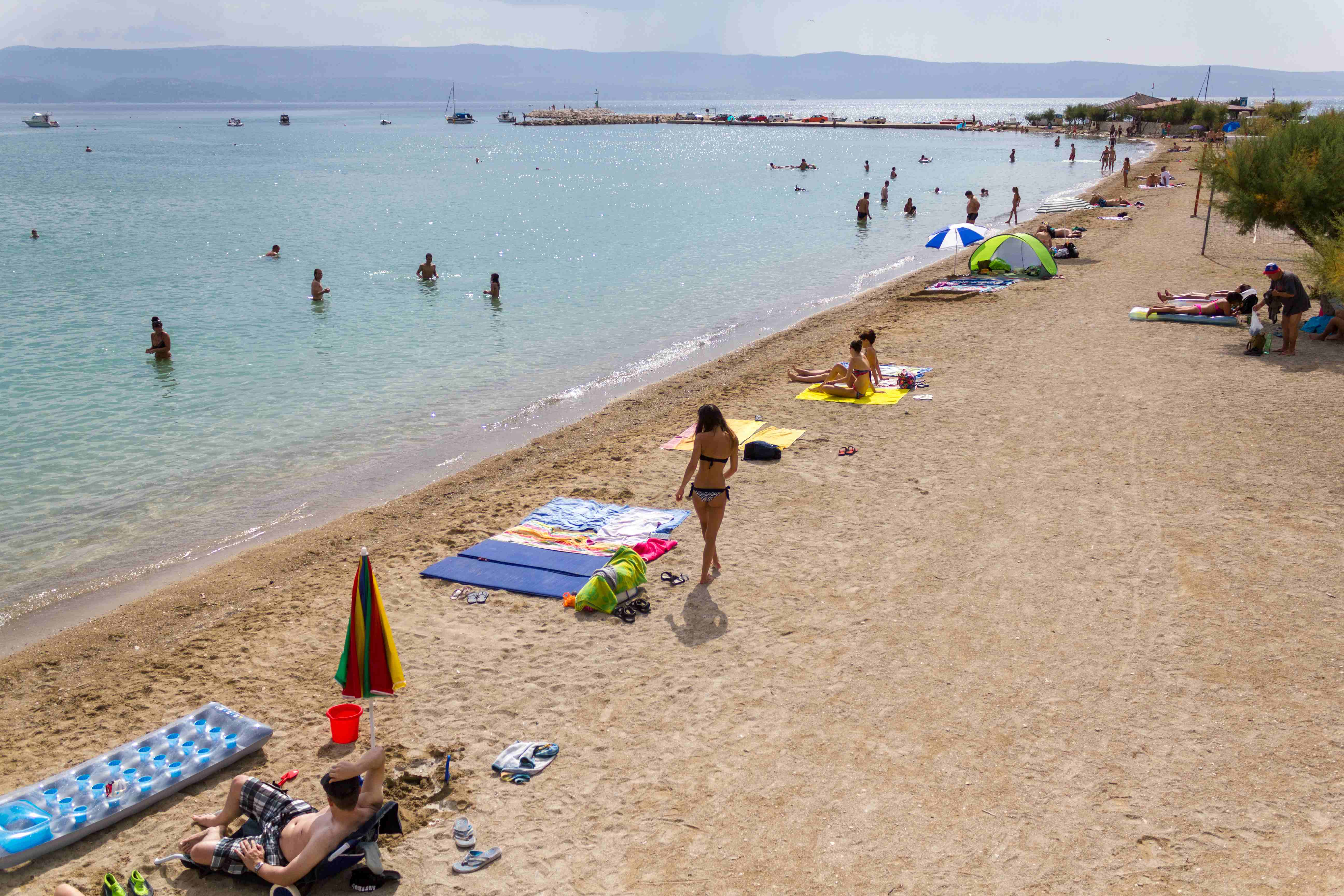 Omis city beach, a huge stretch of sand, moments walk from the centre - there's plenty of room for everyone © Omis Tourist Board
Omis city beach, a huge stretch of sand, moments walk from the centre - there's plenty of room for everyone © Omis Tourist Board
A short ride down the coast offers a 20-kilometre stretch of perfect small-pebble beaches, shaded by scented pine trees, sitting on impossibly clear waters. Pretty hamlets and fishing villages like Nemira, Stanici, Ruskamen, Lokma Rogoznica, Medici, Mimice, Marusici and Pisak allow you to chose between peaceful seclusion, diving and watersports or flavour-packed lunchtime dining in a traditional Dalmatian tavern.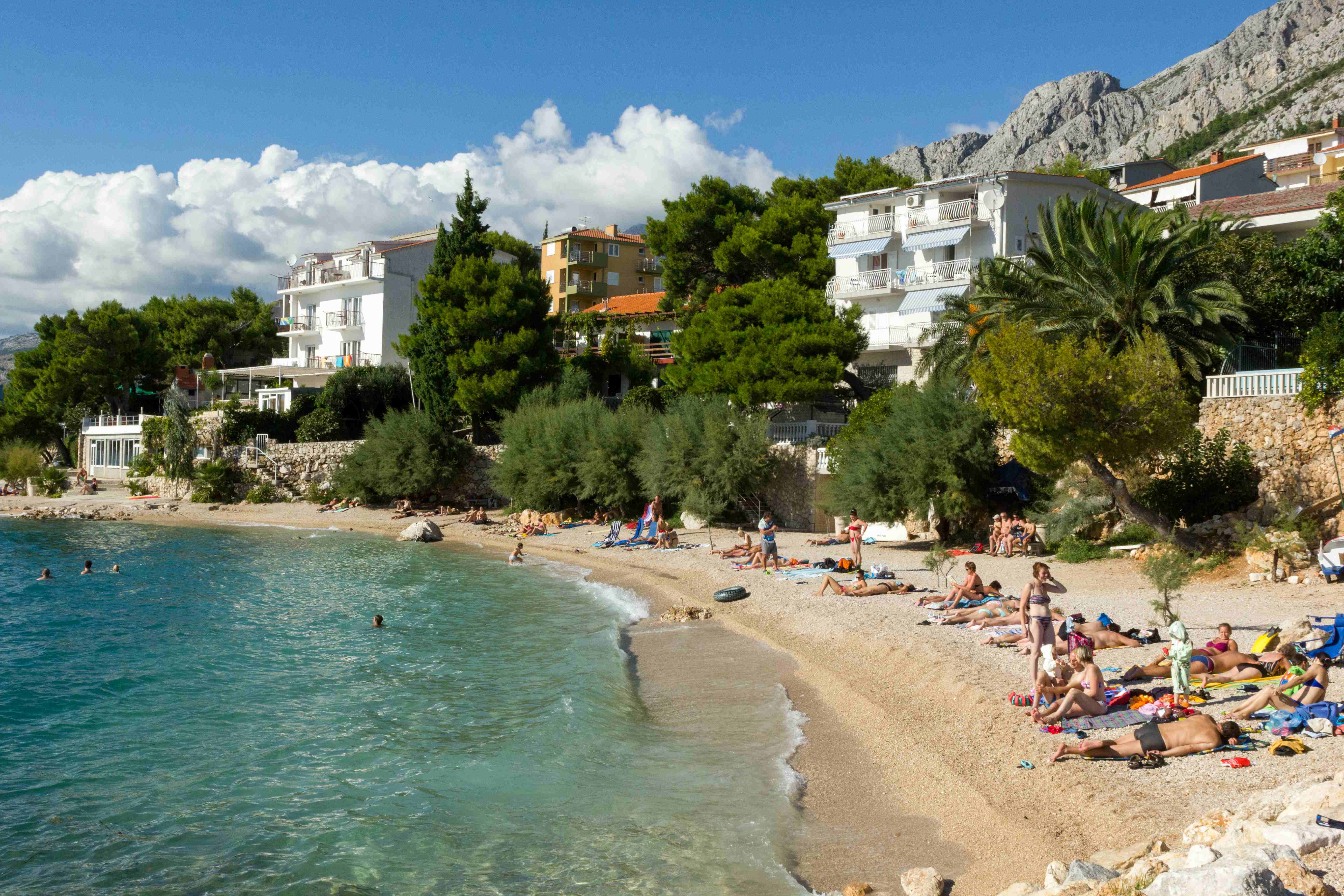 The village of Nemira, one of the countless pristine beaches along the 20 kilometres of the Omis riviera © Omis Tourist Board
The village of Nemira, one of the countless pristine beaches along the 20 kilometres of the Omis riviera © Omis Tourist Board
This winter has long to go. We will be inside for quite some time yet. But, that gives us plenty of time to dream of next summer. Of all the places you think you'd like to be, once the warm days return, the City of Omis and its riviera should be top of the list. Unique in its offer of adventure, nature, culture and heritage, there really is nowhere else like it on the whole of the Adriatic.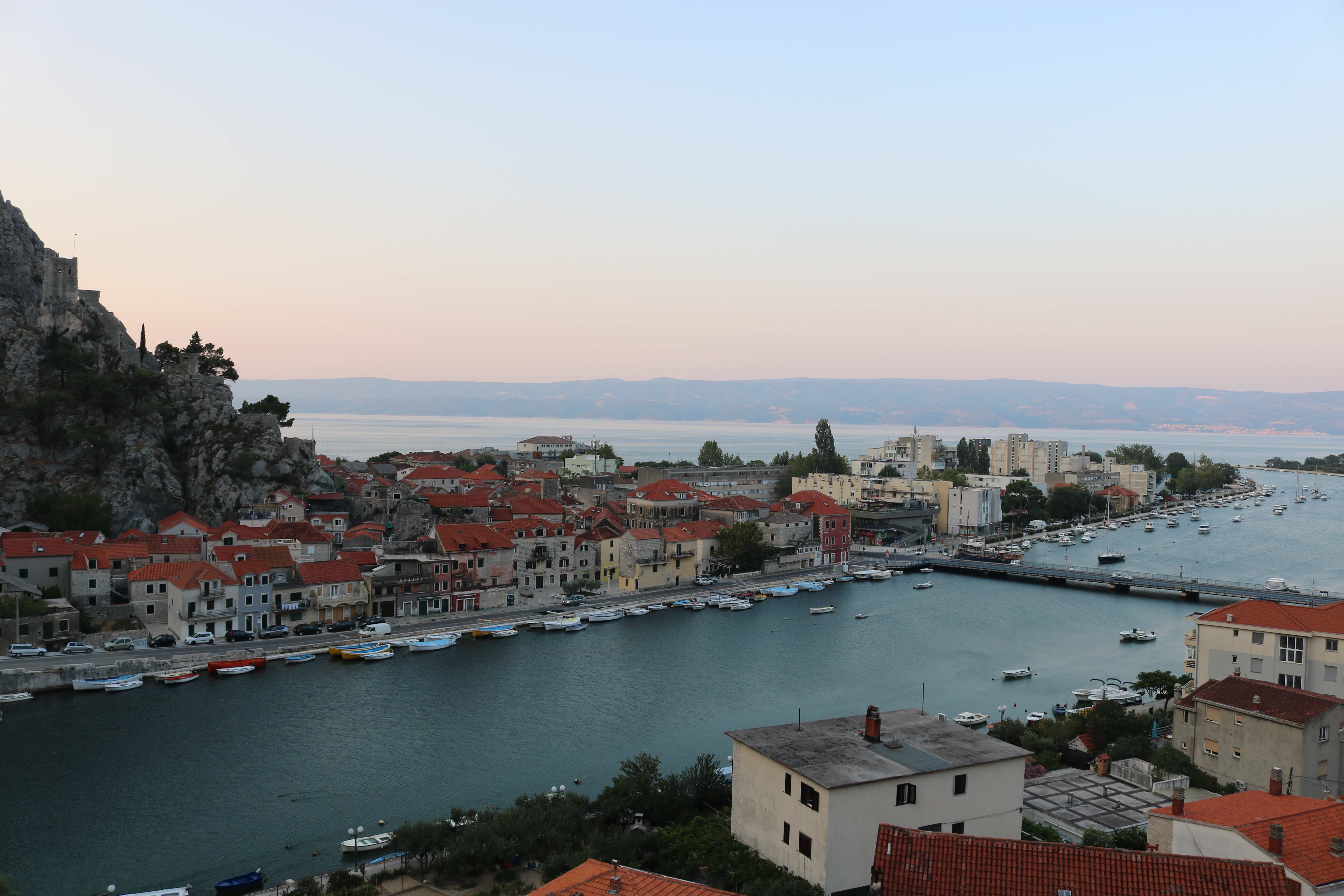 Daybreak over Omis, as seen from the restaurant balcony of Hotel Villa Dvor. The hotel's restaurant is the best place to take coffee in town, the view is spectacular © Marc Rowlands
Daybreak over Omis, as seen from the restaurant balcony of Hotel Villa Dvor. The hotel's restaurant is the best place to take coffee in town, the view is spectacular © Marc Rowlands
This article was written by TCN journalists based on first-hand experience of visiting Omis and was subsequently approved by Omis Tourist Board
Six of the Best! Croatian Protected Produce On Sale in China
September 18, 2020 – Six items of Croatian protected produce are among the 100 European items to go on sale in China
Six items of Croatian protected produce are among the 100 European items to go on sale in China. In a reciprocal deal, 100 Chinese products will also be recognised and recommended on the European market.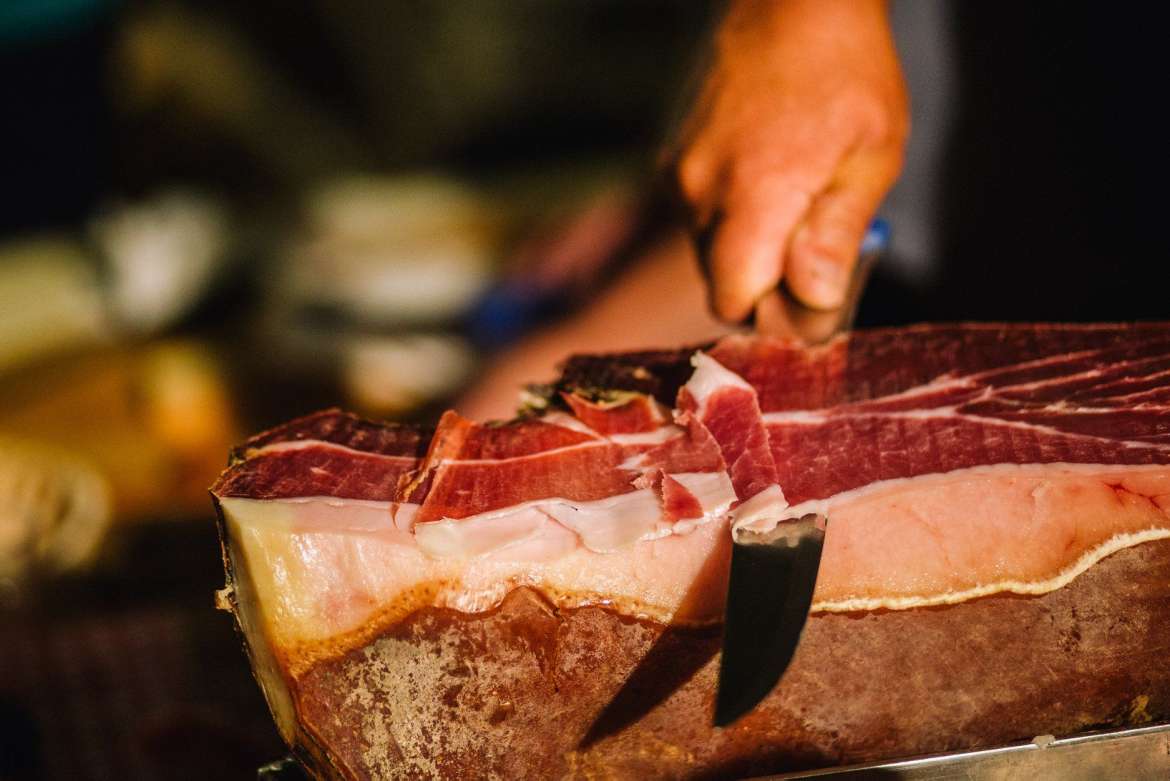 Dalmatian prosciutto © TZ Vrgorac
Dalmatian prosciutto © TZ Vrgorac
Baranja kulen, Dalmatian prosciutto, Drniš prosciutto, Lika potatoes, Dingač wine and Neretva mandarins are the premium six Croatian protected produce chosen to be among the European 100. All of the Croatian protected produce is already recognised at a national and at an EU-level and designated its status based on its unique place of origin.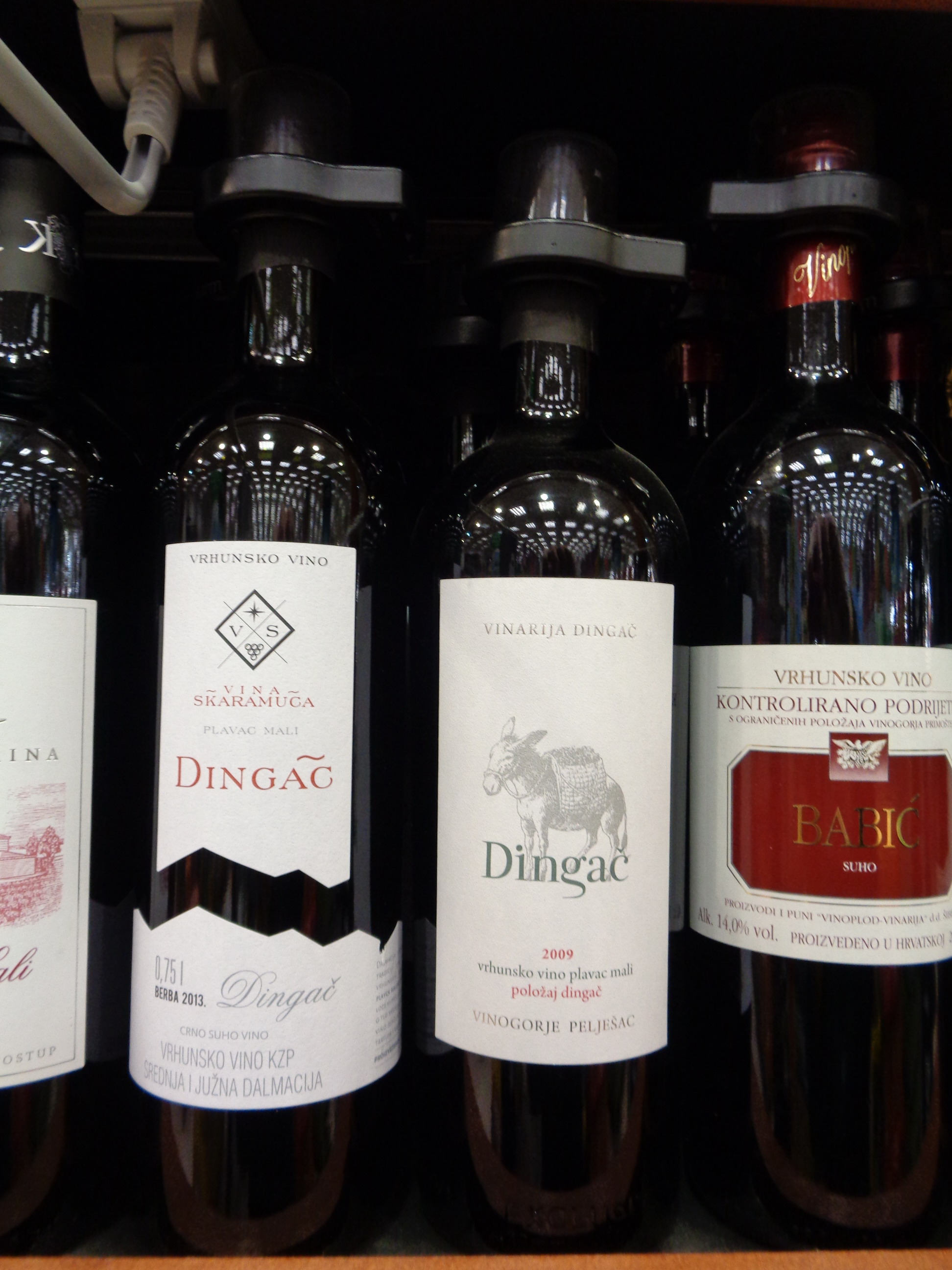 Dingač wine © Silverije
Dingač wine © Silverije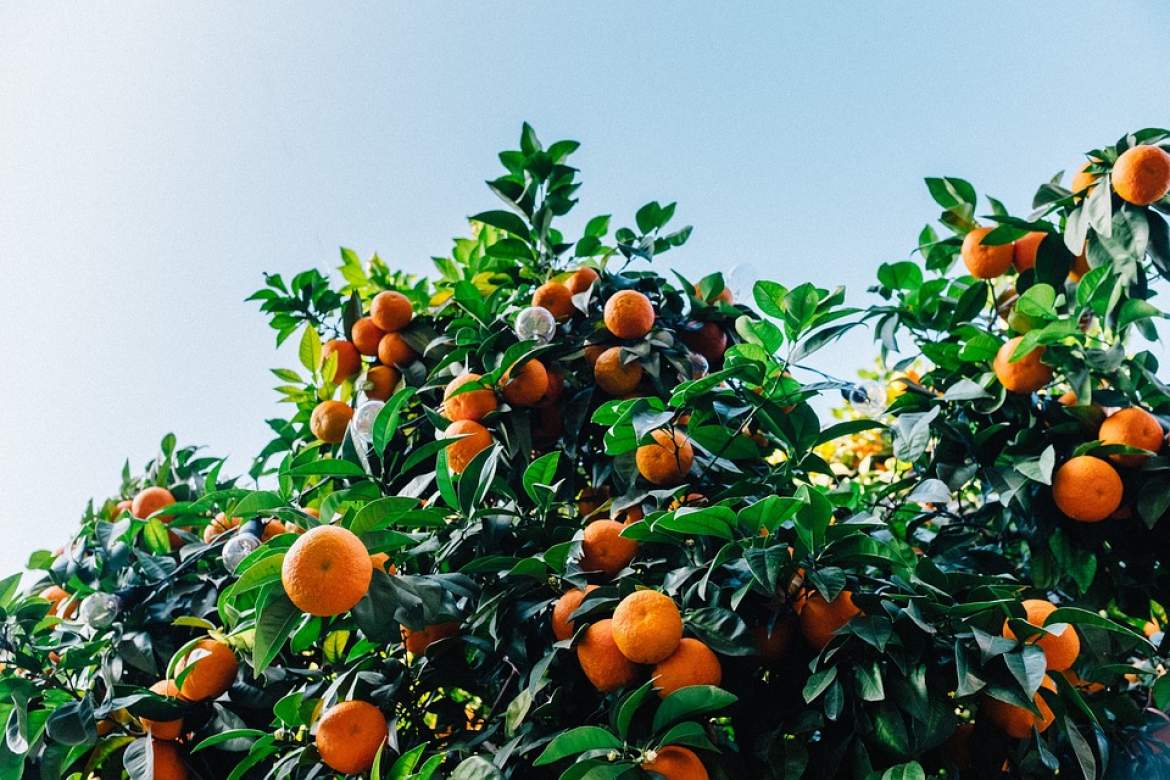 Neretva Mandarins
Neretva Mandarins
The European products will be specially marked and receive special privileges when they go on sale in China. Alongside the Croatian protected produce, other items on the European list are French champagne, Greek feta cheese, Italian Parma prosciutto, Italian mozzarella, Irish whiskey and Portuguese port. On the Chinese list of products are distinct varieties of rice, bean and vegetable products, some of which will already be popular with Europeans who eat or cook Chinese cuisine.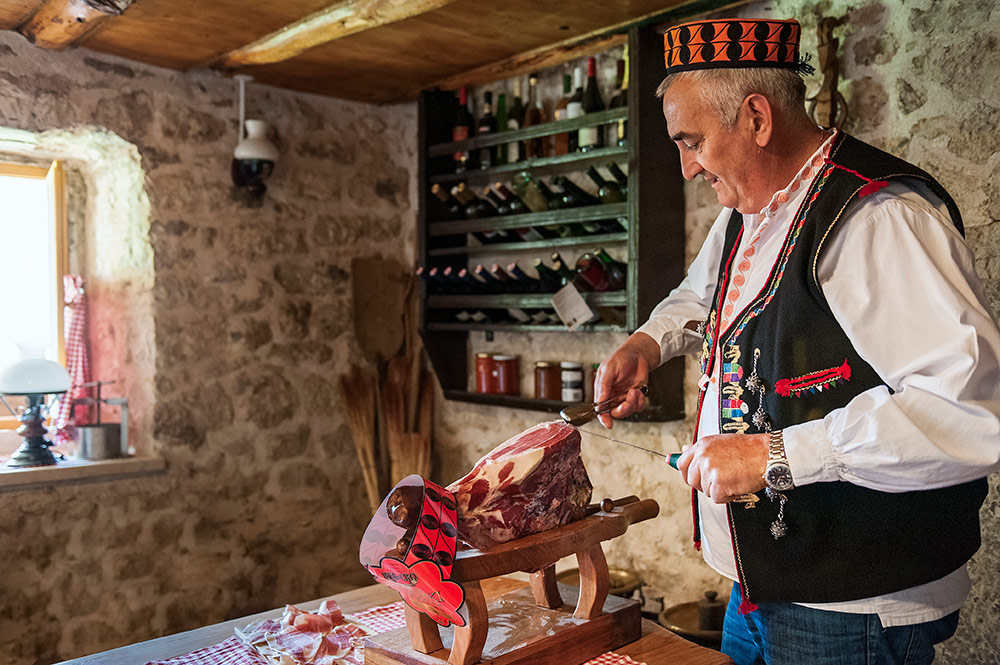 Drniš prosciutto © Tourist Board of Drniš
Drniš prosciutto © Tourist Board of Drniš
The full list of Croatian produce protected at an EU-level currently includes Istrian olive oil, Dalmatian prosciutto, Pag cheese, Lika lamb, Poljički Soparnik, Zagorje turkey, Korčula olive oil, Istrian prosciutto, Sour cabbage from Ogulin, Neretva mandarins, Slavonian honey, Drniš prosciutto, Cres olive oil, Pag salt, Baranja kulen, Bjelovarski kvargl, Varaždin cabbage, Pag lamb, Šolta olive oil, Meso 'z tiblice, Zagorje mlinci, Krk prosciutto, Lika potatoes, Slavonian kulen, Krk olive oil.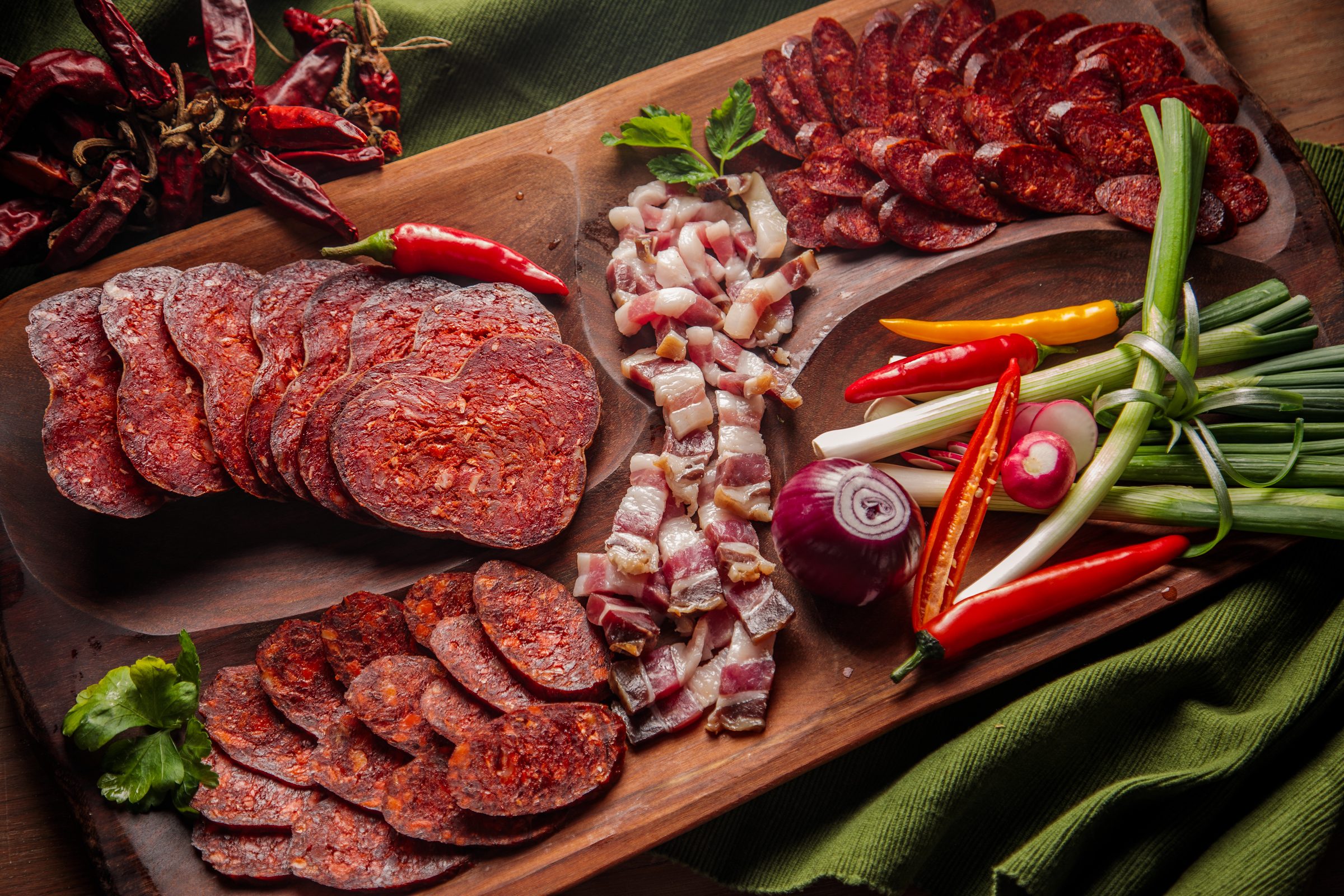 Baranja kulen, featured within a traditional Slavonian platter © Romulić & Stojčić
Baranja kulen, featured within a traditional Slavonian platter © Romulić & Stojčić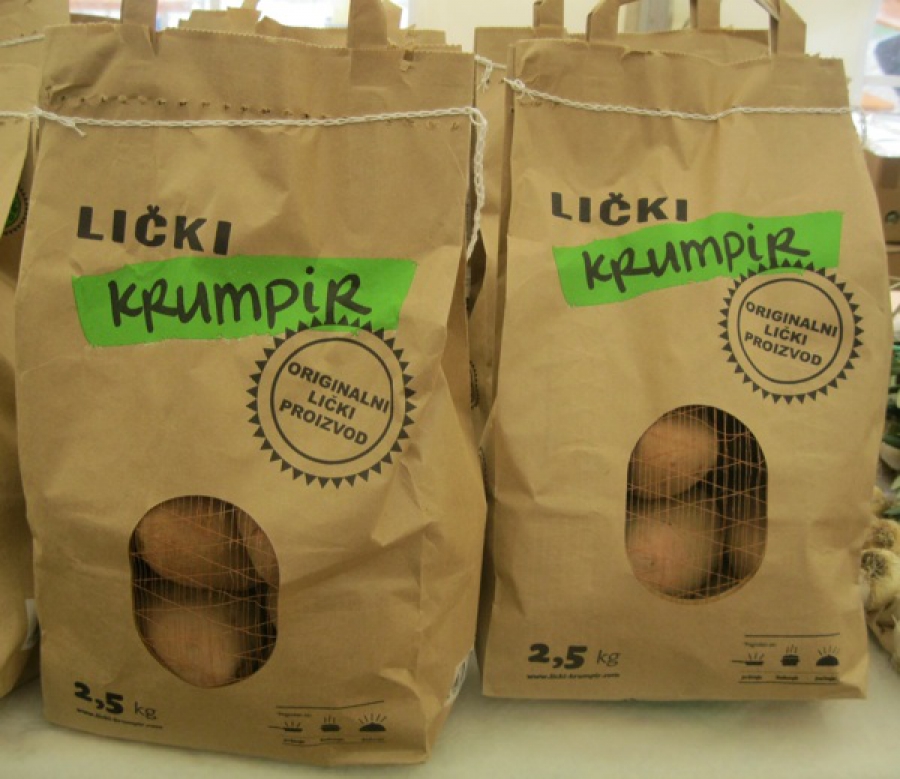 Lika Potatoes
Lika Potatoes
For the latest travel info, bookmark our main travel info article, which is updated daily.
Read the Croatian Travel Update in your language - now available in 24 languages
Split-Dalmatia Calls Concessionaires to Anti-Cigarette Butts Action
As Morski writes on the 29th of August, 2019, the Tourism and Maritime Administration of Split-Dalmatia County has invited all concessionaires involved in the hospitality industry and similar sales activities to join the globally popular environmental and civic campaign which advocates for a coastline without the presence of cigarette butts.
The campaign started in Estepona in Spain, and it aims to keep beaches, nautical tourism ports (marinas etc) and sports ports clean and free of cigarette butts.
''You, as concessionaires, are required to actively participate in this campaign by informing your customers and service users - inform them of the need to keep the environment clean through promotional posters that will be delivered to you.
Put out paper ashtrays or cans that can be used as ashtrays. The installation of plastic cups and bowls for the collection of cigarette butts is not allowed. Cans and paper ashtrays can be filled by all those interested, not just by smokers, by collecting cigarette butts. Cans or paper ashtrays filled with cigarette butts shall then be ''exchanged'' for a free drink if the concessionaire carries out hospitality services,'' reads a letter sent by the Tourism and Maritime Administration to all local concessionaires.
In addition, a non-extinguished cigarette butt is often the cause of a fire, so fire prevention would also be carried out in this way.
''Split-Dalmatia County will, within its means, provide funds for the campaign to be carried out as successfully as possible in the form of brochures, paper ashtrays, posters and media visibility,'' a letter to Split-Dalmatia County's concessionaires read, asking them to express their interest in participating in this praiseworthy campaign.
It is a reminder that this excellent campaign was initially launched this summer in Estepona, a popular summer resort located on the coast of southern Spain.
In order to keep their beautiful sandy beaches clean, they thought up, in collaboration with local hospitality workers, the idea that anyone who brings an adequate container filled with cigarette butts gets a free beer or some other refreshing soft drink.
This has since grown into a very popular environmental campaign that, in addition to keeping beaches clean, also protects the underwater world. The campaign has quickly expanded across the entire Mediterranean and has, as we have reported previously, now reached the Croatian coast.
Make sure to follow our dedicated lifestyle page for much more.
Split Police to Approve Placement of New Surveillance Cameras
Big Brother may well be watching you in and around the wider Split area as local police approve a significant number of brand new surveillance cameras in numerous locations within that aforementioned area of central Dalmatia in the name of heightened security.
As Poslovni Dnevnik writes on the 17th of May, 2019, the Croatian police in Split-Dalmatia County will issue their approval if all of the necessary conditions for the placement of the new surveillance cameras are met, and if they deem that the setting of the new video surveillance system will positively affect the level of general security of people and property.
The Split Police Administration has stated that approvals have already been issued for the installation of new surveillance cameras in the nearby areas of Trogir and Solin.
As Slobodna Dalmacija reports, as of the beginning of 2019, the Split Police Inspectorate has issued two approvals for the placement of video surveillance systems in Trogir in 23 locations and in Solin in a further 10 locations. Before the new approvals came, Solin had received police approval for three cameras, and this year Solin requested a police review of locations where the administration could set up three times as many such devices.
Should local police give the green light to the new surveillance camera locations and agree that their placement would be beneficial to the area's overall safety and security levels for both people and for property, then all of the approvals will be given. In previous years, licenses were granted to Split for fifteen different locations, Solin received approval for three locations, Makarska got the green light for six locations, Hvar was okayed for twelve locations, Sinj was approved for one and the Lovreć Municipality received approval for four locations.
Make sure to follow our dedicated lifestyle and Total Split pages for much more.
Dire Renting Situation in Split as Landlords Kick Tenants Out For Tourists
As Merien Ilic/Novac writes on the 23rd of April, 2019, while some can't wait for the Croatian tourist season to arrive, others see it approaching with tears in their eyes and with gritted teeth. The latter are, of course, Split's many tenants who in recent years, somewhere around this time of year, have begun to be afraid that they will be kicked out of the apartments they're renting and have to settle all of their bills, after having signed a contract (and one can only guess how much weight that really holds legally) and despite there having been no objections whatsoever to their behaviour as tenants.
Practice has shown that the euros which line the pockets of tourists are worth more than the kuna of Croatia's actual residents, so during the summer, beginning as early as the Easter holidays, numerous apartments are rented to foreign tourists who think nothing of paying multiple times what your regular Croatian tenant can pay for one month's rent.
Apartment ads which are in the "long-term" rent category are a real attraction indeed, and each and every genuine such ad is quickly snapped up, disappearing from the internet.
''I have more than 200 inquiries in my inbox and I've had about thirty calls in record time, so I apologise to anyone I didn't manage to get back to. I've just agreed to rent out my apartment. I wish you all luck in finding an apartment!'' stated one landlord in a group for the long-term rent of apartments in Split and its surrounding areas. The apartment in question was located in Sućidar, it looks tidy, has two bedrooms and was rented for 3000 kuna per month, plus the electricity and water supply. Realistically speaking, this was a real gem because such apartments, especially those that have been done up nicely, are very rare for such a price.
Those who are looking for a flat have drastically different experiences from the field.
''I'm giving up on searching in Split. We're a family of five and we have to move out of our rented apartment because the owners want to rent it to tourists, and the search for a new one is impossible. The price are sky high, and they look at us as a family of five with appehension. You can't find a respectable apartment under 500 euros,'' this was the unsettling experience of a tenant who was searching for a place Split's surroundings, and eventually found an advertisement for a nicely decorated apartment in Vranjic for 400 euros per month long term.
Social networking sites such as Facebook are full of common experiences of people who have come across apartments being rented at sky high prices by landlords, and which appear to not have even seen a paintbrush or some new wallpaper for the last few decades.
People describe being met with 40 year old rugs and carpets, furniture from the socialist era and landlords seeing no issue whatsoever with still wanting 400 euros plus bills for month for such apartments.
A social networking user detailed his personal experience:
''There was a flat for rent in Brda, "long term", in a private eighty square metre building. We went to look at it, everything was great, the woman seemed alright, and we were also alright. There were two of us and two other guys. The owner said she'd get back in touch with us because someone else was still coming look at the apartment too. I called her at noon today and she says to me, "I'm still thinking about it, we're a serious family, I'd prefer someone younger if we end up deciding that they need to move out earlier. It's easier to get younger people out of the apartment than it is with a family."
The second stated that tenants are unprotected and usually without a contract. Many landlords don't even register people renting, they don't pay taxes, and life tends to be the most difficult of all for students in the area searching for long-term accommodation during their studies at local universities.
As the situation in and around Split worsens all the more for would-be long term residents, a similar situation can be found in almost all of Croatia's tourist gems, with particular emphasis on Dubrovnik, a city which lives and breathes tourism and has continually put it far above any of the often very basic needs of its burdened residents for many years now.
Make sure to follow our dedicated lifestyle page for much more.
Click here for the original article by Merien Ilic for Novac/Jutarnji
Mediterranean Festival of Books to Offer More Than 10,000 Titles
As Morski writes on the 15th of April, 2019, the Mediterranean Festival of Books, a book fair with a sales and festival nature will be organised by the Association of Publishers and Bookstores of the Croatian Chamber of Commerce (HGK) and under the auspices of the Ministry of Culture, Split-Dalmatia County and the City of Split, will be held from the 8th to the 12th of May, 2019.
A record 100 exhibitors will be offering discounted books with up to seventy percent off, with around 10,000 titles to choose from.
As always, entrance is free and during the five days of the festival, you will be able to see the latest publications covering a space of more than two thousand square metres in the large hall of ŠC (Arena) Gripe, and there are also three other stages where the Mediterranean Festival of Books program will take place.
In addition to the well-known Bookvarij and Mali Bookvarij locations where children's workshops, panel discussions and a professional program will be held, the evening part of this event related to all things books will also be located at the "Cukarin" hospitality facility in Gripe.
Fifty program activities have been prepared, and the expectation is for as many as 35 promotions of the latest works of some award-winning and acclaimed authors to take place.
Among other things, this year's Mediterranean Festival of Books program will include panels consisting of prominent lecturers who will talk about important local topics, and there will of course be a multitude of workshops for the youngest among the festival's visitors on offer. Numerous promotions for new children's editions are also being planned.
All information and a detailed oveview of the Mediterranean Festival of Books 2019 program with its workshop schedule is available here, as well as having been published on the event's official Facebook page and on Instagram.
The Mediterranean Book Festival is being organised with the support of numerous partners such as the Split Tourist Board, Split University, Split Student Centre, the Split Sports Facilities public institution, Hotel Zagreb - Split, Cukarin Gripe, Slobodna Dalmacija, Europlakat, Mandis, CineStar, Barcaffè, CedevitaGo, and Kala.
Make sure to follow our dedicated lifestyle page for much more.
Group of Young Croats Create e-Vision Project for the Blind
For such a small country, the Republic of Croatia boasts a wealth of talent across all fields, from medicine to sport and from science to innovation and invention, Croats have given a huge amount to the rest of the world.
While Zadar's Luka Modrić might be the household name of Croatian sport, and the likes of Nikola Tesla and Mate Rimac might be the Croats best known to the world when it comes to science, technology and innovation, there are many more individuals in Croatia given less exposure who have a lot to offer the world, and on across an extremely varied platform consisting of all fields.
As SibenikIN writes on the 16th of March, 2019, a young woman from the historic Dalmatian city of Šibenik, Anastazija Verović, a student of FESB, along with her colleagues, has designed an innovative new device for helping the blind. Thanks to her creation, Anastazija and her team have received yet another award from Split-Dalmatia County for this project,.
Anastazija Verović, Lucija Visković, Ena Sarajlić and Ana Žunabović, are all Croats in their fifth year of graduates studies in computer science at FESB and they expressed their desire to help both the blind and other partially sighted people.
Their desire led this talented young group of Croats to create the e-Vision project, an intelligent device which functions as a bracelet and allows blind and visually impaired persons to move around in spaces. For this praiseworthy project, they have rightfully received a second award in the amount of 4,000 kuna from Split-Dalmatia County.
Split-Dalmatia County Prefect Blaženko Boban presented the presented the award to the talented group of FESB students as the brains behind the best student entrepreneurial and innovative project, according to a report from Dalmacija News.
The first prize of 5,000 kuna was awarded to the e-Agrar project, and was handed over to another talented group of Croats - Slaven Damjanovic, Martin Pervan, Dražen Pervan and Marko Calić. Otherwise, the obviously highly talented Anastazija is set to graduate computer science at FESB this coming summer.
Make sure to stay up to date on Croatian-made innovation, ideas and technology by following our dedicated Made in Croatia page.
Split-Dalmatia County Constructing Nautical Tourism Ports in Autumn
Split-Dalmatia County is getting ready to make the most out of nautical tourism.
Nautical tourism boasts a plethora of potential opportunities for Croatia, with more and more tourists from across the planet arriving in the sparkling Croatian Adriatic with their various vessels, eager to explore the country of 1000+ islands in the most authentic way, Croatia has started to step up its game in terms of opening its arms more to nautical tourism and the economic fruits that is likely to bring.
As Morski writes on the 14th of March, 2019, this autumn is set to bring work on Croatia's blossoming nautical tourism sector as central Dalmatia will see the opening of as many as nine construction sites designed for nautical tourism ports, as was announced by Split-Dalmatia County's tourist board.
The planned investments of the County Port Authority in the area of Central Dalmatia, with the support of the appropriate ministry, amount to approximately 300 million kuna this year, which will significantly improve the entire area's maritime infrastructure, according to a report from Dalmatinski portal.
''The construction of a port with a waterfront and accompanying facilities in Omiš is being prepared. Throughout 2019, preparations will be being made for the beginning of the construction of the harbour and breakwater for all types of vessels except for the ferryboat in Bol on the island of Brač.
The Rogač port project on Šolta was realised, Stomorska port in the east of Šolta and Splitska on the island of Brač will be done up. In Sućuraj, on the eastern point of the island of Hvar, this autumn works on the re-doing of the harbour, which will result in completely new look for Sućuraj, are set to take place. The same will take place in Kaštel Stari, where a port project with all of the accompanying amenities is being implemented,'' added the Split-Dalmatia County tourist board.
Make sure to follow our dedicated lifestyle page for more information on what's going on in Central Dalmatia, Split-Dalmatia County, and much further afield.
Young Hunter Films Three Wolves in Split-Dalmatia County
There are three types of large animals living in the Republic of Croatia, the Eurasian lynx, the bear, and the wolf. While these animals do their best to stay well away from human interaction of any kind, there are rare occasions when they make an appearance a little too close to comfort, and even a little too close too home. One young hunter spotted three wolves drinking water in Lovreć, Split-Dalmatia County, causing a panic among locals.
While wolves have been protected in Croatia since 1995, they still carry their fearsome reputation, which may likely be uncalled for. Since these pack animals prefer to stay as far from the spotlight as possible, rarely coming into any form of contact with humans or human settlements, they aren't a common sight. Sadly, when they are seen more than once in an area close to humans, people begin to worry.
As Slobodna Dalmacija/Mladen Nejasmic writes on the 2nd of February, 2019, in the area of Sidoča, in the place called Pozicija near the hamlet of Čolckušići in the Municipality of Lovreć in Split-Dalmatia County, young hunter Marijan Petričević managed to capture a rare video of a small group of wolves, consisting of what appear to be three adult individuals, drinking water on from a quagmire area designed for wild pigs.
The unusual and somewhat alarming picture immediately spread like wildfire across social networking sites, making the small group of Lovreć wolves become big news for a short time.
Many residents of that area claim that those three wolves are part of a larger pack which seem to have territory in the Kamešnica - Zavelim - Sidoč - Biokovo area, and that they are seen more often than usual in these dreary winter conditions.
Because of the large number of predators, the number of wild pigs has been reduced, a situation which is likely to upset hunters who make a living, or who simply live off their meat.
What is worrisome to the locals of Lovreć and other border areas in Split-Dalmatia County is the fact that hunters operating within this region have spoken about the constant presence of about a dozen wolves living permanently in that area.
Make sure to stay up to date with our dedicated lifestyle page for more.
Click here for the original article by Mladen Nejasmic for Slobodna Dalmacija
Is Split-Dalmatia County on Verge of Tourism Collapse? An Expert Opinion
Split is bursting at the seems of tourism due to the lack of infrastructure which does not meet the increasing demands of the sector. This was demonstrated by the “Study on the Capacity of Tourism in Split-Dalmatia County," developed by the Institute of Tourism, reports Slobodna DalmacijaSlobodna Dalmacija on December 16, 2018.
With the existing traffic and public infrastructure, Split should not increase the number of tourists in July and August, experts warn.
Given the state of the infrastructure, the study recommends that the entire coastline from Trogir to Makarska should not increase the number of tourists in the peak season. If the problems are not eliminated, there will be "unwanted consequences on the upcoming arrivals, quality of tourism products, and thus on tourism spending and tourism revenues."
“Without the significant involvement of the local self-government in tackling traffic problems and solving workforce problems on the islands, further growth in the number of tourists could mean a collapse of the tourism system in certain places, which would have long-term consequences for the County's economy, and thus the satisfaction of its citizens,” warns the study.
Local authorities in the County are aware that tourism has reached capacities beyond which it should not be exaggerated with further growth in the peak season.
Almost all cities and islands, including Split, complained that they did not want to increase tourists in July and August. Trogir and Baška Voda would even reduce the number of arrivals. Only in Inland Dalmatia would the local self-government wish to double the number of tourists, as tourism is merely beginning there.
The Tourist Board of Split-Dalmatia County commissioned the study. At the beginning of July, the Croatian Chamber of Commerce and the County presented the project to media representatives: ”We are the first to have something like this."
The summer heat was accompanied by unforgettable traffic jams around Split and its surroundings - and this season ended with a rise in tourist overnights.
Dr. Zoran Klarić from the Zagreb Institute of Tourism commented on whether there is the possibility that Split sees a tourism collapse.
“We were obliged to warn of critical points where problems might arise, but there is little chance that the system will break down.
People are afraid that the system will collapse. But we shouldn’t panic. There will be no collapse, but traffic jams will become so unbearable that people will be dissatisfied and in the coming years, there might be fewer tourists. This is what is happening in cities like Prague or Paris, where you can’t practically pass through city centers,” Klarić believes.
The Institute considers there could be a problem with the water supply throughout the County, with the four largest cities supplied from the Jadro experiencing water losses. On Vis and in Makarska there is a “supply of potable water to the level of sufficiency in the season, and existing water supply capacities are at the margins of full utilization."
“Split is too dependent on the Jadro river source. If something happens with that source, the city would be in big trouble. Like what happened in Slavonski Brod, they might be without water. The tourists won’t escape in masses because of this, but they will be dissatisfied,” says Klarić.
There are also problems with the sewage, with numerous septic tanks unloading into the sea without prior treatment.
"The city has to invest something, and the state automatically responds poorly if someone seeks money. Especially in an environment that makes a lot of money from tourism,” warns the head of the Study.
One of the problems is the electrical power system which is on the edge of wear in certain areas, so for example, the load of the power line in Split is almost over the thermal transmission limits. Additionally, the whole County system is not ready to receive electricity from renewable sources, and that resource is virtually unused.
“While there will be no collapse regarding electricity, there will be a reduction, as was the case on some islands, for example, Vis,” notes Dr. Klarić.
The garbage problem in the County is so severe that the authors of the Study warn that "not only should the number of tourists in the County not be increased, but that number should be reduced until the problem of waste disposal is resolved."
“A lot of these things do not work - but they do not have to do with tourism. We accuse tourism of being guilty of everything, but for example, crowds only increase the existing problems. Here I am thinking primarily of the garbage problem, which is great in Split-Dalmatia County.”
A particular problem is the traffic infrastructure, for example, the roads, the massive lack of parking lots and the many crowds of traffic, which negatively affects tourists and even more so the residents of the County.
"As for parking and traffic, there is one trivial thing to talk about, and it is essential. Split has no 'smart traffic lights.' Zagreb is also not glamorous as far as traffic is concerned, and very little has been done, but a lot has been done by introducing 'green waves' and automatic traffic measurements. In Split, that is not the case at all, the traffic lights are uncoordinated,” Klarić added.
“You have a tunnel leading from Kopilica to the port, and the parking problem can be easily solved at Kopilica. There is plenty of parking space there, and the railroad can serve as a metro.
When I go to a big tourist city, I never park in the city center. You cannot find a place, and it's terribly expensive. In principle, people park in the outskirts and take public transport to the center,” explains Klarić.
The Institute of Tourism advises, however, that "long-term consideration should be given to the relocation of crucial traffic facilities in the area of the City Port, primarily the ferry port and the bus station.
“In Zadar, there was tremendous resistance to moving the ferry port to Gaženica, but now everyone is happy. We propose, according to the old urban idea, that we run the line going to Supetar to Stobreč. I know this idea is sensitive, but that's the story. Half of the tourism traffic in the city harbor is on the Split-Supetar-Split line because it is by far the most frequent connection.
The bus station could easily be moved to Kopilica. This is not an integral part of the study, but detecting problems and pointing out what will happen and what should be done,” he adds.
The study recommends that Žnjan, Marjan and Salona should be exploited more for tourism.
“Žnjan can be an area where tourists could spread out and moved away from the center. Everyone will go to Diocletian's Palace, you cannot avoid it, but it is important that those who come to Split for two days are not in the palace all the time and can go elsewhere. This is the essence of it - to regulate pressure, disperse it and move it where it causes less damage.”
One thousand five hundred respondents were surveyed for the Study. It turns out that tourists have only 1.3 square meters of space on the beaches in Split, but there are fewer crowds on the beaches than tourists on the Makarska Riviera, who have a little more space - three square meters per bather.
Also, tourists are much more satisfied with Split, which is the opposite on the Makarska Riviera, where only 58 percent of tourists are satisfied, giving it the worst result in the County.
“When you come to Split, you do not expect a big city to have large beach spaces. Barcelona or Venice practically have no beaches, and if you go there, you will not go swimming. For tourists, it is enough to have Bačvice. And if Split people are not satisfied with Bačvice, they will probably swim somewhere else, on Šolta or the Marjan beaches.
It is also clear that Split has shown less tolerance towards tourism, as the percentage of people who do not live from tourism is much higher than in Makarska,” Klarić says.
The positive attitude toward tourism is highest on the Makarska Riviera and the Split Riviera (the area from Trogir to Omiš), as most people there benefit from tourism.
On the Split Riviera, 62 percent of residents have direct or indirect benefits, and on the Makarska Riviera, as much as 89 percent of them have some benefit from tourism. On the other hand, in Split, 52 percent of respondents said they did not have any benefits from tourism.
Despite some differences, local authorities in the County estimated that the capacity of tourism in July and August has reached its limit.
In Split, the "local self-government is of the opinion that the number of tourists in the peak season should be kept at the existing level and the number of one-day visitors should be reduced", according to the study. On the Split Riviera, there are divided opinions, as some would increase the number of tourists, and some would keep it the same, while Trogir would reduce the number of tourists in the peak season.
On the Makarska Riviera, the local self-government is mostly against increasing the number of tourists, except for Gradac (10%). Baška Voda would cut them by as much as 30 percent.
Although the Institute for Tourism sees opportunities to increase tourism on the Central Dalmatian islands, the local self-government on Hvar is not for increasing the number of tourists in the season. Only Postira and Pučišća on Brač are for it, while Selca would reduce tourists in the peak season by 10 percent.
The local government would retain the existing number on Vis, while Komiža is for a minimum increase. Inland Dalmatia wants to double the number of tourists in the peak season. All local authorities in the County are hoping for a more significant amount of tourists in the pre and postseason, except for Trogir, which would keep their numbers in June and September at the current level.
To read more about Split, follow TCN's dedicated page.


